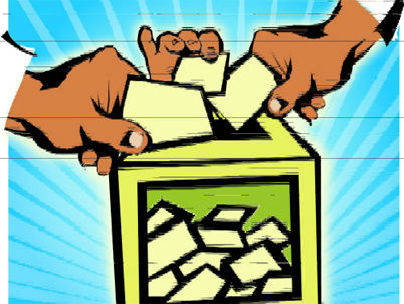Does Big Data have any role in politics? Can it help political parties improve their door to door campaigns based on people’s responses in social media or even predict the final result of an election? If you are haunted by these questions, here is the answer.
By mining and analyzing real-time data on the ongoing elections, that include voter sentiment, emotions and concerns in different constituencies and states, experts can:
1. Determine how much fund they should raise for the election campaigns and how much funds should be allocated to what department (advertisements, door-to-door campaigns, press conferences, rallies etc.)
2. Rework advertisements and create detailed models for voter engagement in swing states and minority voter clusters and increase the power of their micro-targeted strategy.
3. More efficiently enroll volunteers and organize resources on the ground to improve the effectiveness of everything from door knocks and phone calls to micro-messaging and social media.
4. Identify places from which the candidate might get support and pinpoint low response areas, thereby planning to increase turnout.
The once Chai Walla Mr. Narendra Modi, who climbed up the ladder to become the Prime Minister of India, is known to be one of the most tech-savvy politicians in the world, who used big data to gain a competitive edge in political campaigns. If the sources are to be believed, NaMo had a team of 100 techies and engineers (a model very similar to what Obama had before his elections) slogging themselves day and night, analyzing every bit of data thereby resulting in the making of—“Abki baar Modi Sarkaar”!! Even campaigns like ‘Chai pe Charcha’ were a calculated move resulting from this analysis.
Besides, corporates like IBM, InMobi, and SAP had dedicated employees to give real-time updates to the party leaders. Modak Analytics, headed by Aarti Joshi and Milind Chitgupakar, built the world’s largest electoral repository. Outbound and inbound communication were continuously monitored and psychographics of 12 crore first time and undecided voters were identified. The BJP website also had in-built cookies which recorded the time and in-out movement in/from the website. All in all, the fusion of Data Analytics and Social Media helped NaMo to use Customer Value Maximization to influence the 1 billion+ Indians. Amazing right?
American President Barack Obama’s win in the US was also based on the very same model. While Republicans were probably taken aback—Big Data—the new ruler of the kingdom—had it all on paper much before! Thanks to the team led by Dan Wagner and tools like Vertica, Airwolf and Media Optimizer which brought together demographical data, TV ratings, and activity from the social media.
NaMo’s and Obama’s sweeping victories have inspired or rather compelled candidates in other countries like the UK and Canada to invest a major share of their campaigns in hiring Data Analytics experts. Canadian candidates have announced the shift from ‘Twitter Elections’ in 2011 to ‘Big Data Elections in 2015. This clearly shows the integration of Social Media with Big Data, will do wonders for India and the World. The candidates would have a clearer insight into the results of their campaign which would help them to invest their time, money and energy in the right direction. If the trend continues, the day is not far when Political Pundits and strategists will be completely replaced by Data Scientists and Analysts.

